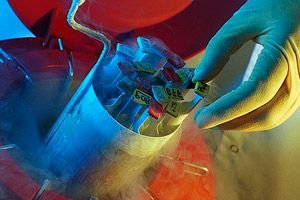
All iLive content is medically reviewed or fact checked to ensure as much factual accuracy as possible.
We have strict sourcing guidelines and only link to reputable media sites, academic research institutions and, whenever possible, medically peer reviewed studies. Note that the numbers in parentheses ([1], [2], etc.) are clickable links to these studies.
If you feel that any of our content is inaccurate, out-of-date, or otherwise questionable, please select it and press Ctrl + Enter.
Stem cell treatments are dangerous
Last reviewed: 02.07.2025
 ">
">In the United States, a team of scientists has found that stem cell treatment can be dangerous. As studies have shown, over time, induced pluripotent stem cells in the patient's body begin to mutate, which negatively affects health.
Induced pluripotent stem cells are reprogrammed cells of the body that can grow into almost any tissue or organ. This feature of stem cells allows them to be used in transplantology.
But American experts have found that with age, the number of mutations in cells in the body increases, so in the bodies of 80-year-old patients, twice as many mutations were found among protein genes, compared to young people.
According to Professor Ali Tokamani, who is the author of the scientific work, when a cell divides, there is a risk of mutation, and with age, the likelihood that a cell will mutate only increases. Such cells can disrupt the work of other cells or provoke the development of a malignant tumor.
At the same time, scientists have found far fewer mutations in the blood and bone marrow of patients over 90 than expected. Scientists noted that the results of 90-year-old patients can be compared with the results of 45-year-olds. Presumably, this is due to the fact that in older people, the existing stem cells were less likely to divide, so they were more protected from mutations.
Scientists have high hopes for stem cells, especially in the field of transplantation. Recently, a patient with multiple sclerosis was able to walk again thanks to experimental stem cell therapy. Eric Thompson, due to a rapidly progressing disease, stopped moving his legs and right arm and was confined to a wheelchair. In the UK, doctors were unable to help Mr. Thompson, so his relatives decided to "try their luck" in a Mexican clinic, where doctors suggested using stem cells to treat multiple sclerosis. According to Eric himself, he assumed that injections would only slow down the progression of the disease, but just a few days after the start of treatment, he was able to get up from his wheelchair and walk a few steps. This result was a surprise for the Englishman, since if he expected positive dynamics in the treatment, then not earlier than in 2-3 years.
Eric Thompson noted in his interview that he hopes that his story can help patients like her, people need to know more about the new treatment method. Of course, the treatment is not free, but what could be more valuable than your own full life.
Thompson underwent a hematopoietic stem cell transplant at a Mexican clinic. The procedure involves taking the patient's blood and using chemicals to destroy harmful immune cells, which allows for a sort of "reboot." Scientists have noted that this type of therapy can slow the progression of the disease and replace defective areas in the nervous and immune systems, but there is no scientifically proven data on the effectiveness of the treatment.
Experimental stem cell therapy shows good results, but these are all isolated cases, and it is currently not known for certain what such treatment will lead to in a few years. Experts are sure that before the official use of stem cells in medicine, their effect on the body must be carefully studied.

 [
[